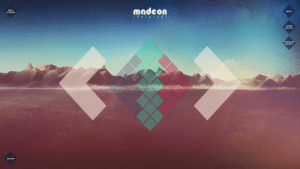Ernest Edmonds’ work titled “Art, Interaction, and Engagement” describes the different categories of interactive art, and outlines the aspects that make interactive projects successful. Edmonds says, “The challenge is to provide just enough attracting and sustaining engagement to draw the audience in, but not so much as to induce boredom” (12). Over my time in interaction lab, I’ve found this aspect to be the most difficult. In Meow Box, for example, people were drawn in by the cat’s fluffy appearance, but once they started petting it, they were quickly bored. Essentially, Edmonds says that the project must be challenging to draw in and sustain a potential user, but not too challenging as to make the user want to leave.
When applying this concept, I looked at two interactive projects. For my final project, I would like to do something related to music, and when I searched the internet, I found these two projects.
The first is titled “Piano Stairs”. Fairly self-explanatory, with a set of stairs becoming the “keys” of a piano, each playing the corresponding note when stepped on. In this case, the goal of the project was to entice people to use the stairs over the escalator, since walking upstairs is healthier. The project was a success, with more than of commuters choosing the stairs over the escalator. I feel like this project was very successful. The lines on the ground draw people in. There’s kind of this moment where people think – I wonder if those stairs can actually play music – that makes them want to check if they actually do. In addition, the escalator only goes one way, so when people walk down they are forced to take the stairs, and people below can hear that the stairs work and then also want to try them out. This satisfies the attractiveness that Edmonds believes is an imperative part of interactive art. However, this project seems to fall a bit short in the sustained entertainment aspect. First, walking up the stairs is physically taxing, so users have a very short physical limit on how much they can use the stairs. In addition, most users are on their way to a specific location and don’t mind taking a small detour up the stairs, however, they do not have time to stay and play on them. This leads to a lack of sustained interaction. However, I think that this project was largely successful, especially since it accomplished its goal of motivating more people to take the stairs. The aspects I would use in my project would probably the physical build of the piano, just on a smaller scale. I think that setting up a physical piano clicks in people’s heads that they can press on the keys to make noise – so the interaction does not need to be taught.

TheFunTheory.com – Rolighetsteorin.se
The second project I found is titled “Madeon’s Adventure Machine”. It’s only online, but I still think it qualifies as an interactive project since the user controls different aspects of the sound created. In this purely digital project, a user creates their own EDM song by selecting a drum beat, a melody, and a counter-melody. They do this by clicking on a blue square, a green square, and a red square, each corresponding with a different audio sample loop. The loops are at the same tempo and in the same key, so they all fit together, so users can create their own song. This project does a good job at drawing users in – the UI is designed very well and the instructions are fairly intuitive. The project also does a fairly good job at keeping users engaged as well, although I can see people losing interest before they try out even a third of the different combinations. In this case, it fits the first half of Edmonds’ description but falls a bit flat in the second half of the definition. However, I do think that this project has several redeeming qualities. First, I think that the diversity of samples was something that I would like to use in my project. Playing just individual notes is a little boring, while looped samples make it feel like the user is really playing a song. Also, I think that the UI on this project is much more engaging than the piano. While the piano is intuitive, the buttons on this project are also equally intuitive, since buttons are made to be pressed. Overall, I think the most successful aspect of this project was that the user gets to create a “finished” product without putting in too much effort. Although there is a bit of an issue with prolonged engagement, the ratio between effort required and final output is balanced very well.

Madeon – https://adventuremachine.4thfloorcreativea.co.uk/adventuremachine/?
From Edmonds’ work and these two projects, I learned that the most successful interactive projects utilized good user engagement, both in drawing in new users and sustaining existing ones. For interaction, this usually means that whatever the user does to interact with the project gives them a satisfying result that makes them want more. I think this is done most effectively when the user wants to complete a task so they do not leave until they are done. In “Piano Stairs” this is done poorly, although the intuitiveness of the design is something that is equally important. In “Madeon’s Adventure Machine” this is done better, although the design loses some of the intuitiveness. I think that in my final project, I want to make something that combines the physical aspects of “Piano Stairs” with the digital aspects of “Madeon’s Adventure Machine” to create something that users can play with to make music.